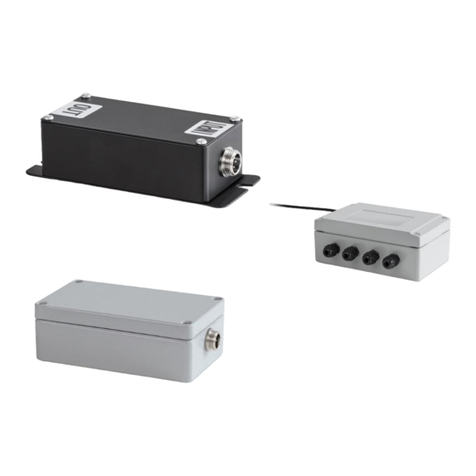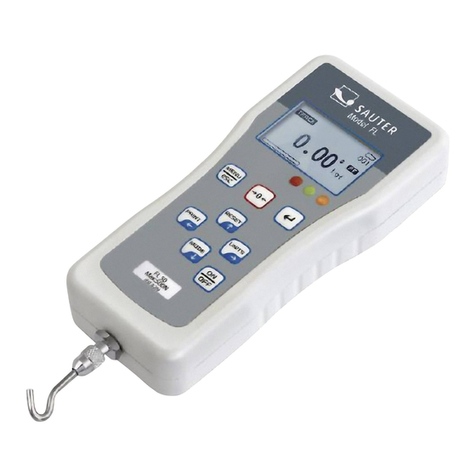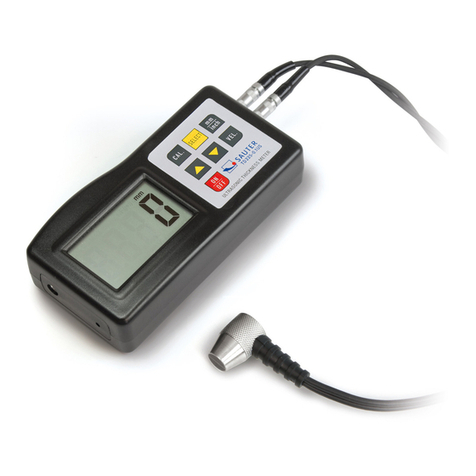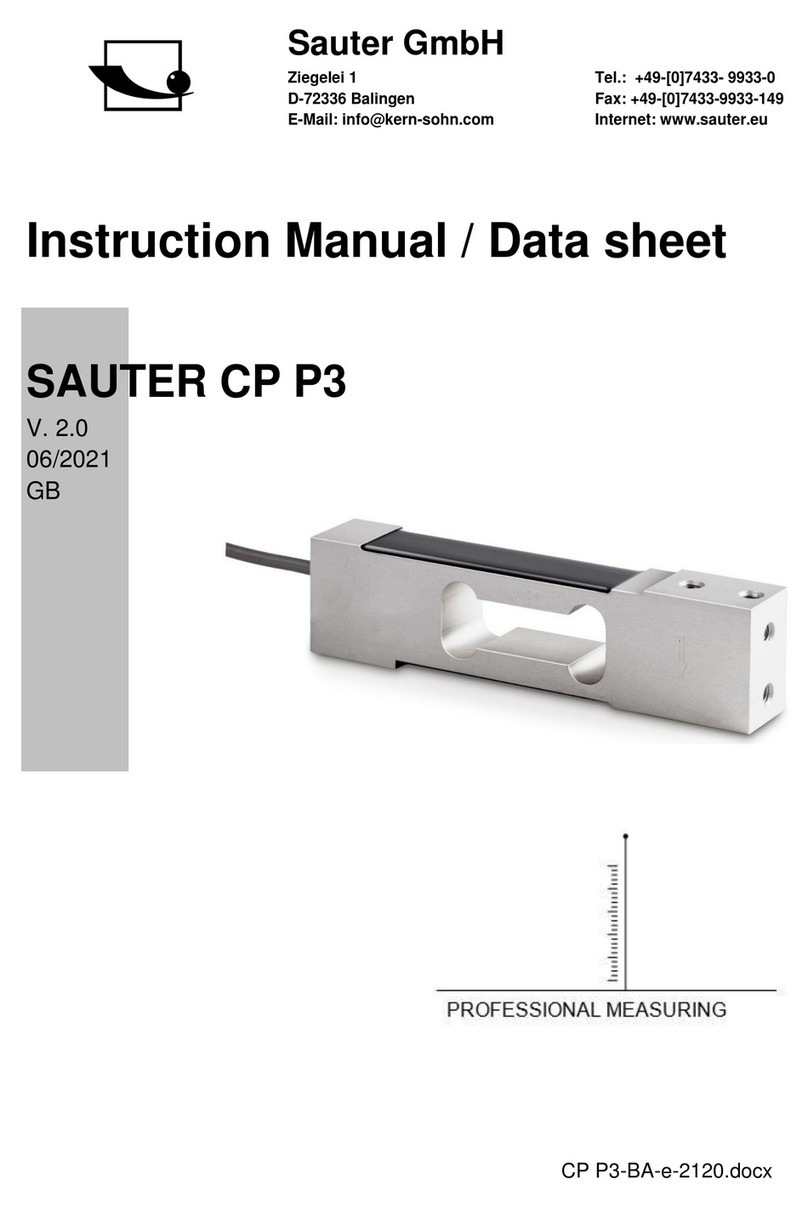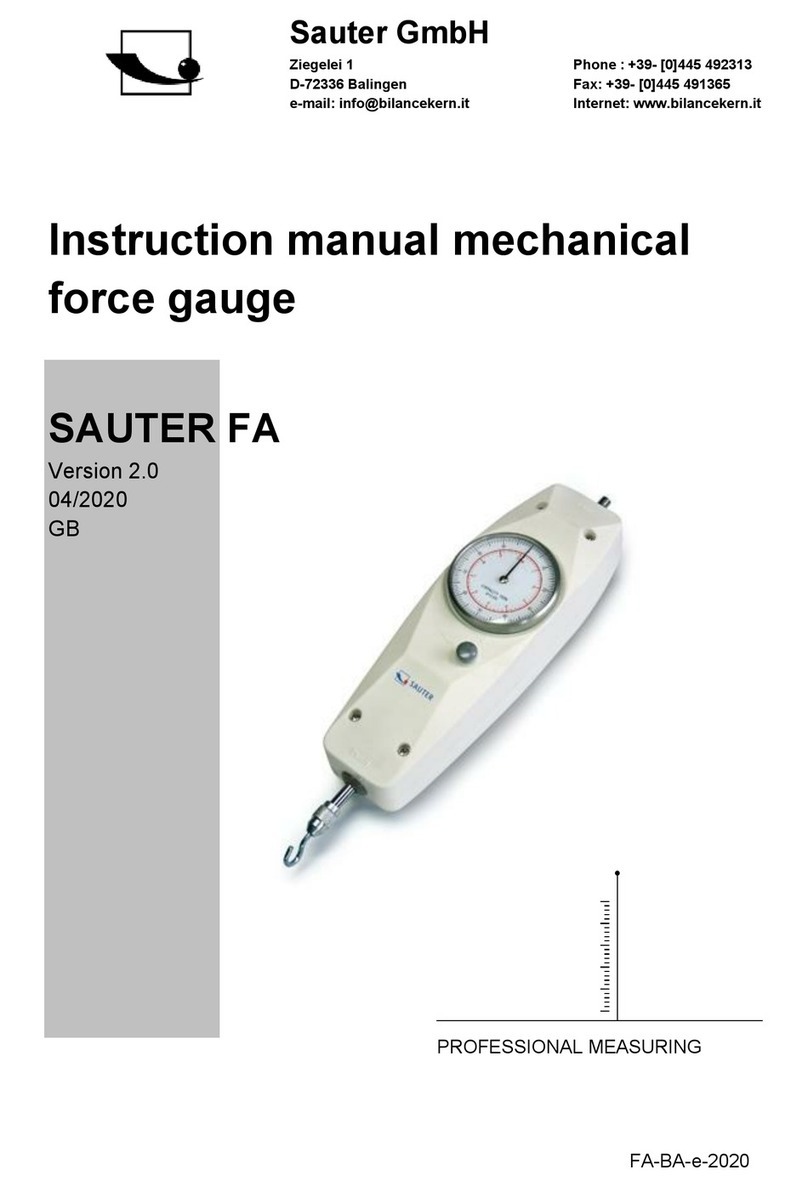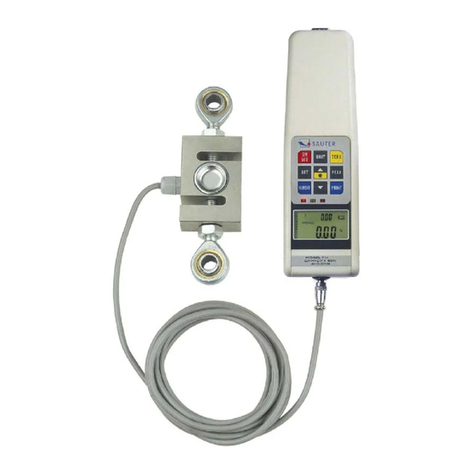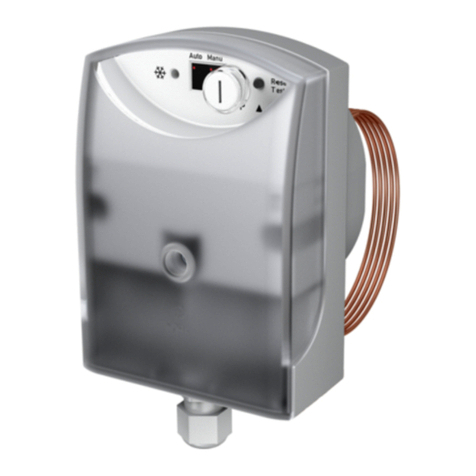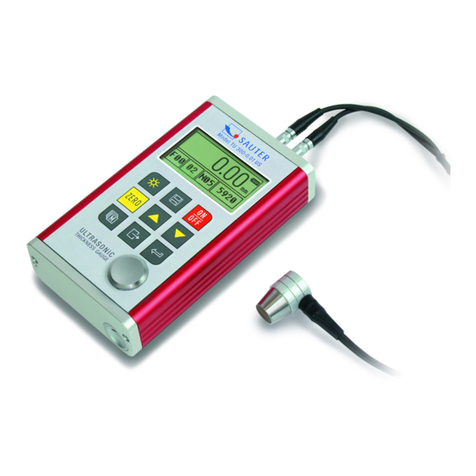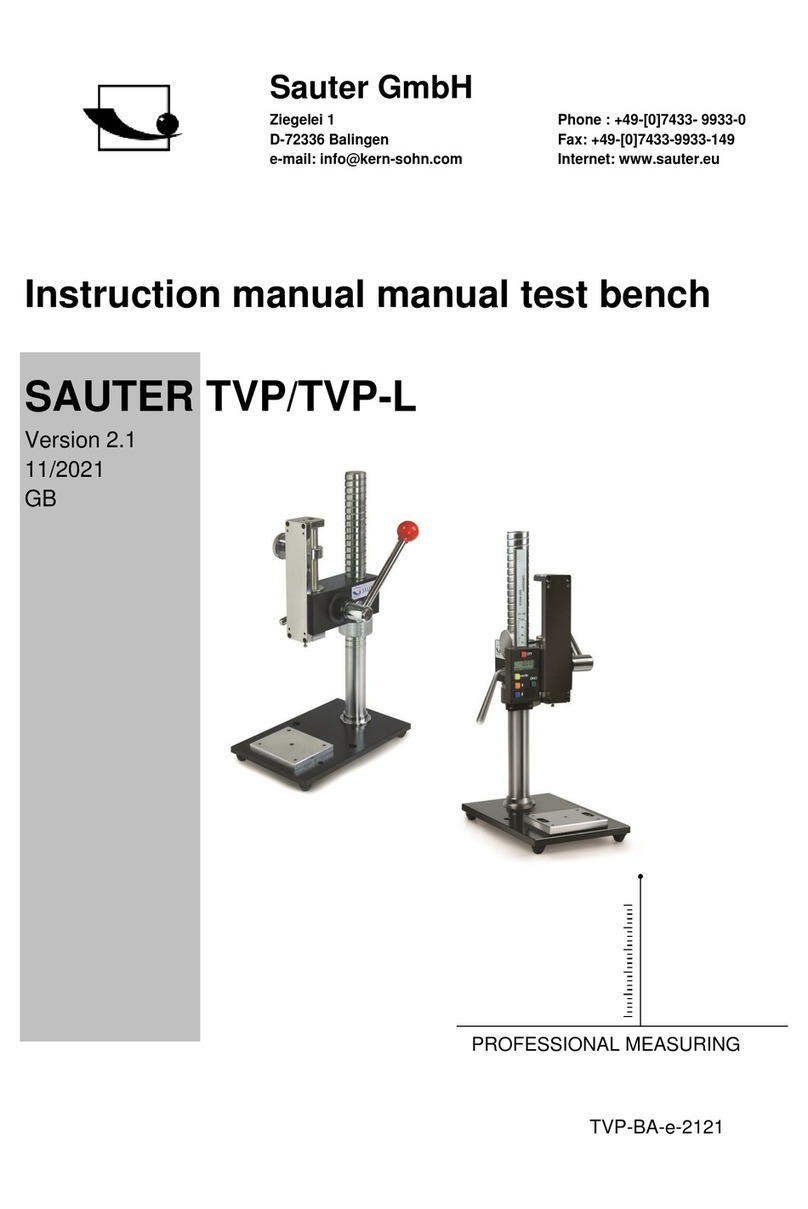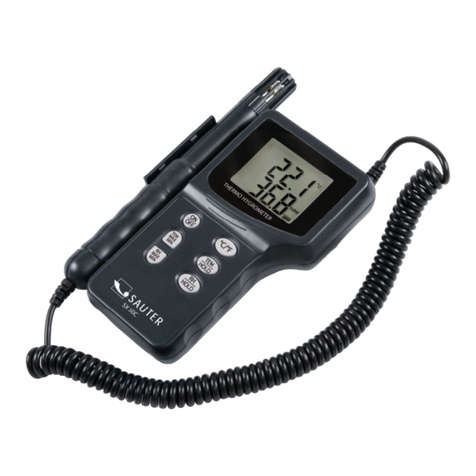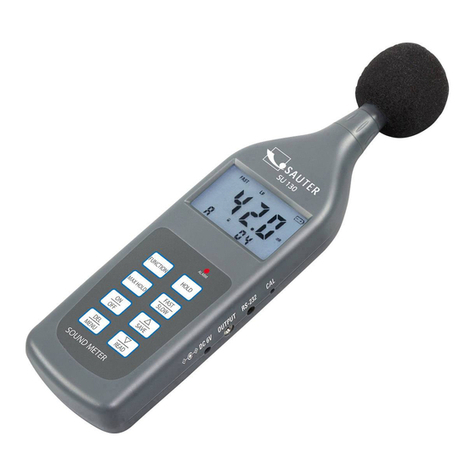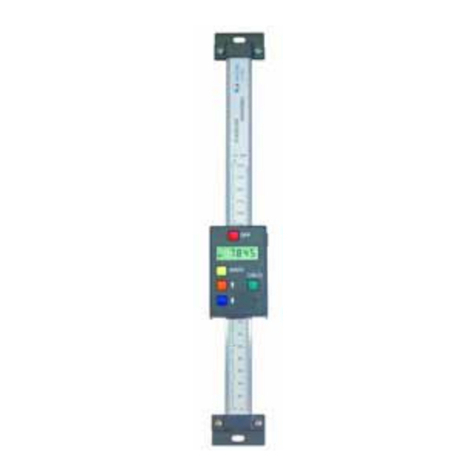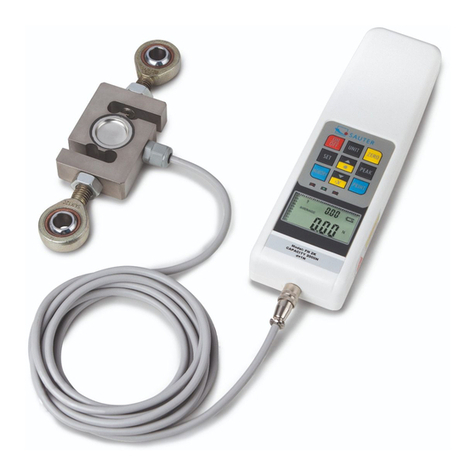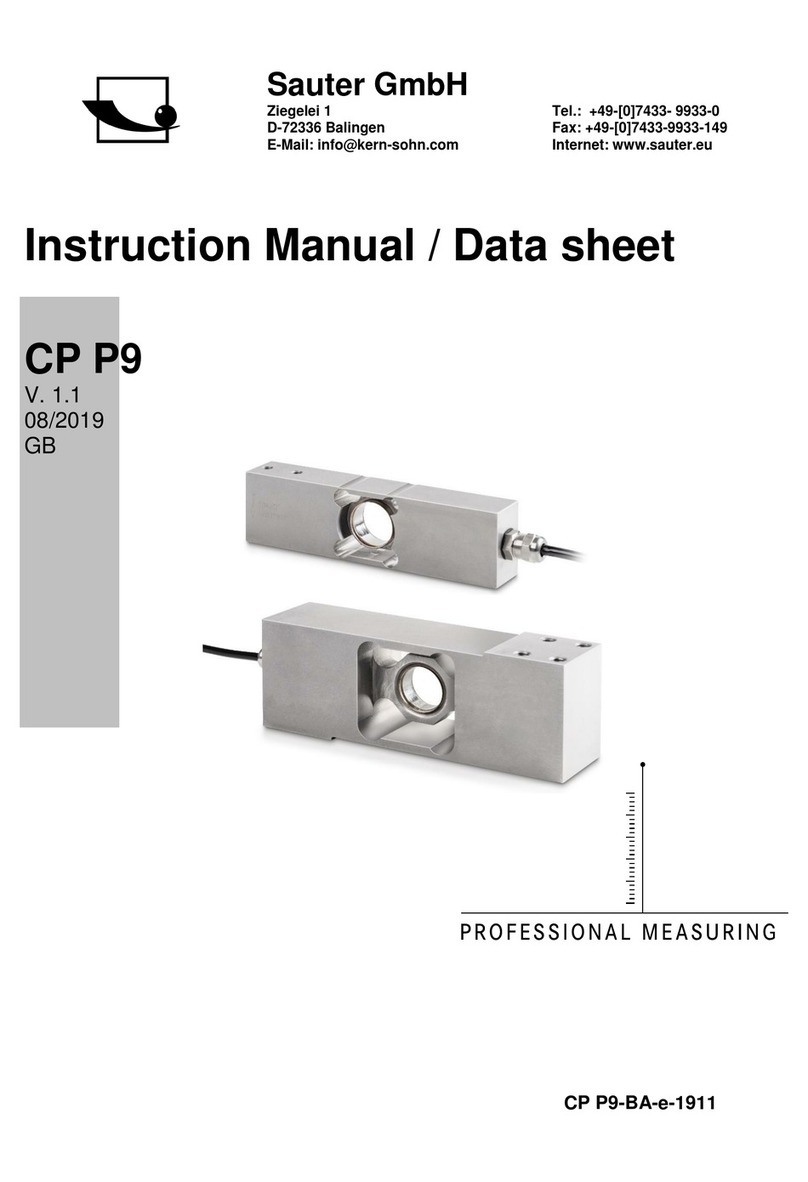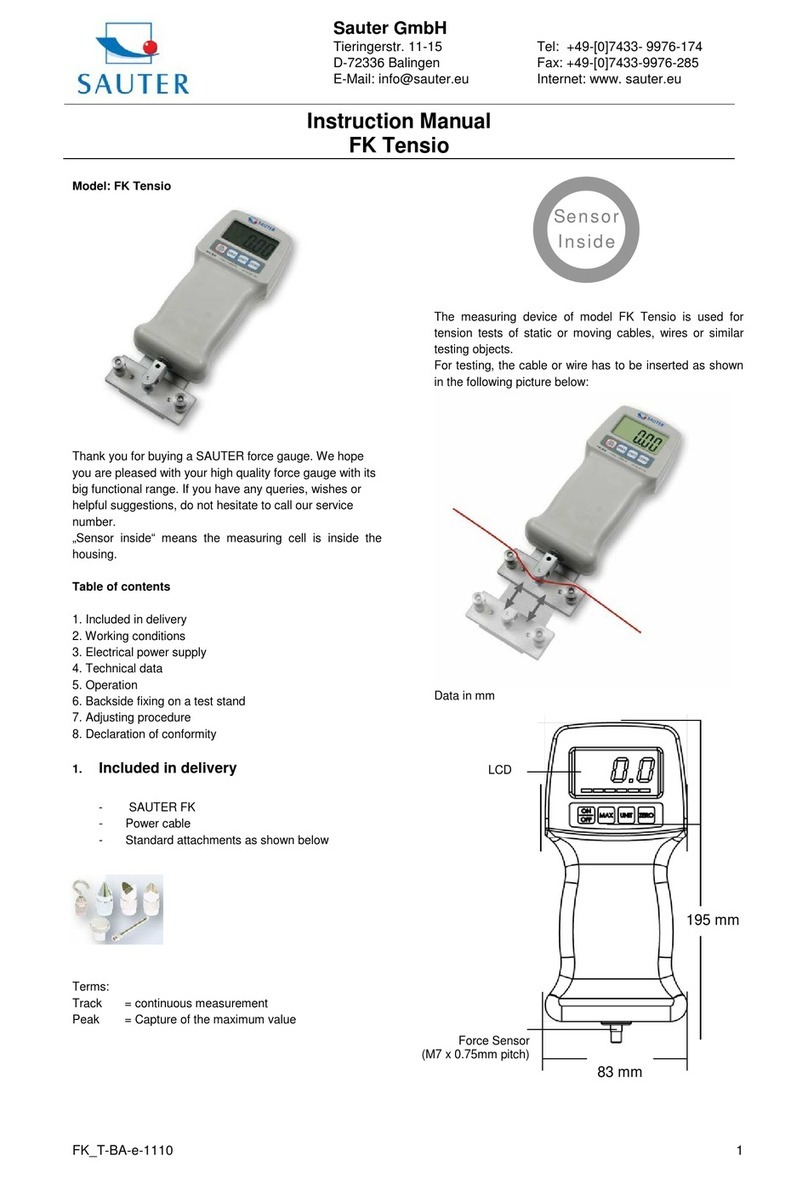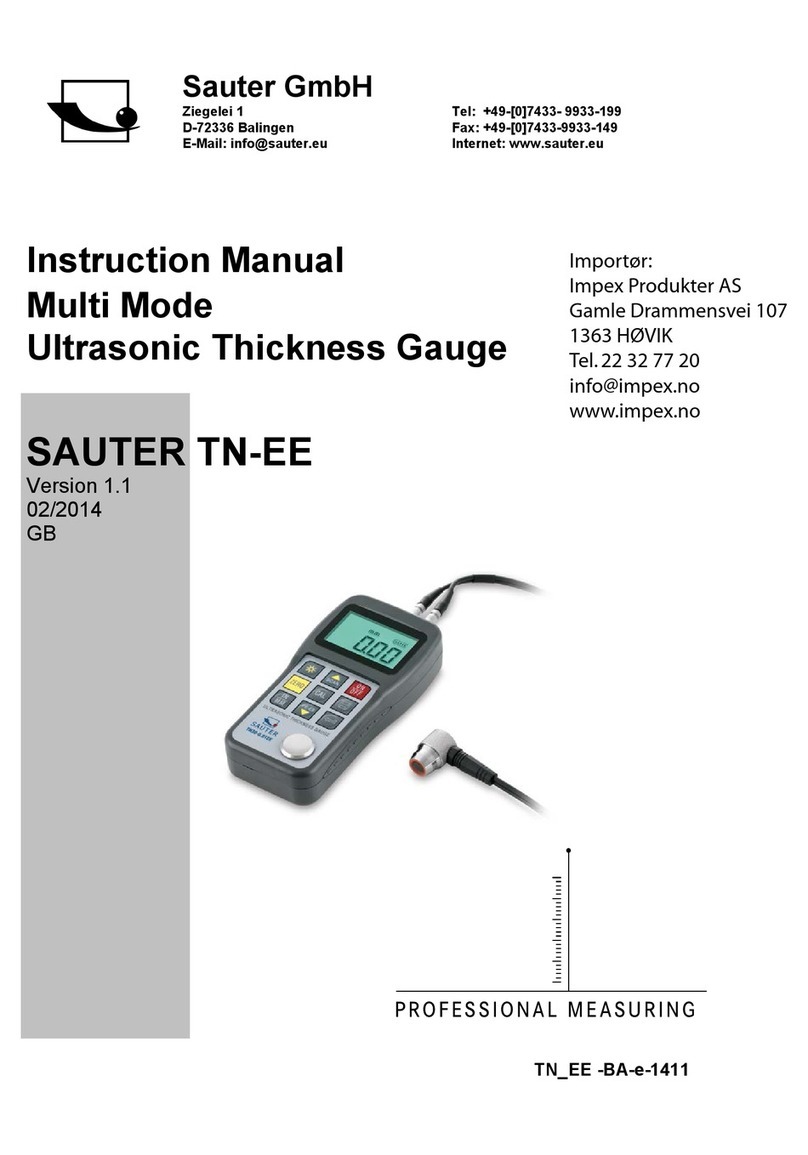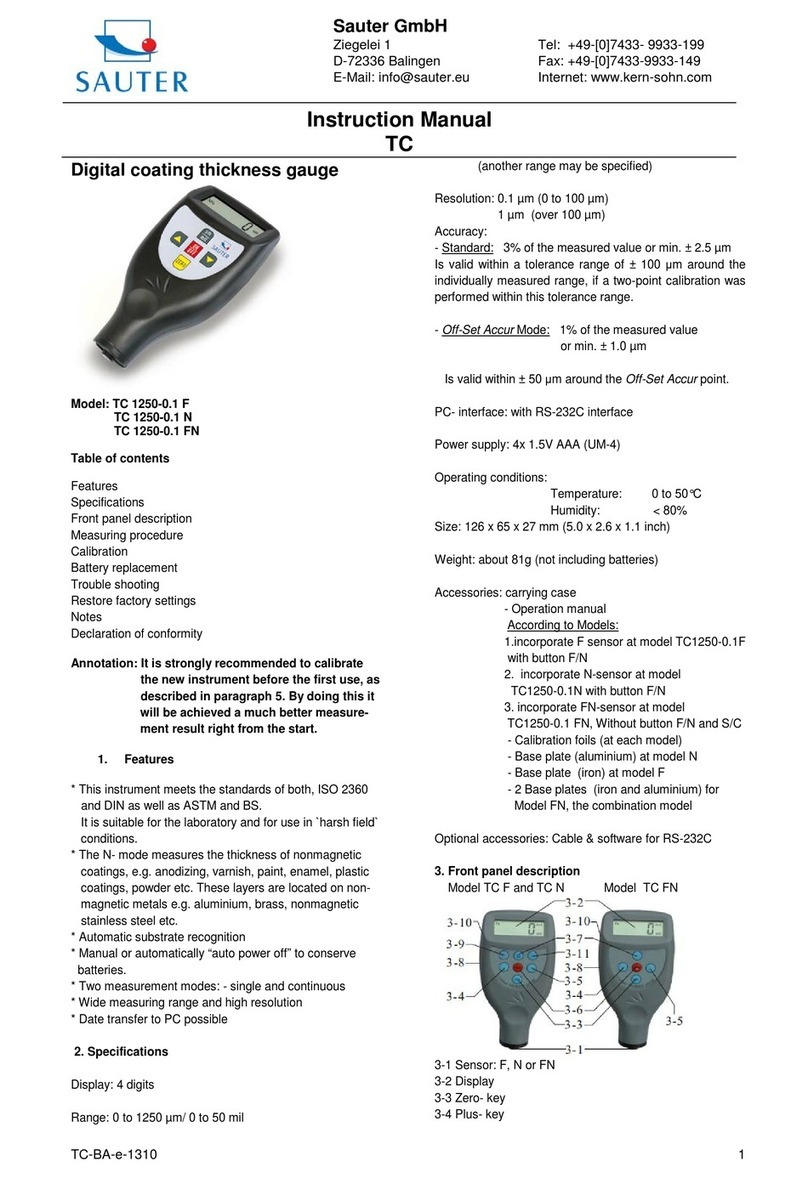
Ziegelei 1
D-72336 Balingen
E-Mail: info@sauter.eu
Tel: +49-[0]7433- 9933-199
Fax: +49-[0]7433-9933-149
Internet: www.kern-sohn.com
HK-D-BA-e-1311 7
work piece supporting
—— Support is not necessary for heavy test work piece
—— The work piece with medium weight must be placed
on flat and solid plane, and it must be placed stably without
any shaking.
Enough thickness of work piece is necessary, and the min.
thickness should comply with the specification in table 3.
As for test piece with hardened surface layer, the depth of
hardened layer should comply with table 3.
Coupling
——The work piece with lightweight must be firmly coupled
with the support; both coupled surface must be flat,
smooth and the coupling agent should not be too much.
The measuring direction must be vertical to the coupled
surface.
——When the work piece is a large area plate, long rod or
bending piece, it can be deformed and become unstable
even the weight and the thickness is heavy and the test
value may not be accurate. So it should be reinforced or
supported at the back of the work piece.
Self magnetism of work piece should be less than 30
Gauß.
4.1.2 System setting of tester
Specific procedures for setting, refers to 6.9.
4.1.3 Measuring condition setting of tester
Specific procedures for setting, refers to 6.5.
4.2 Testing
A standard hardness block should be used to check the
tester prior to the testing; and the reading value error and
repeatability should not be more than the specification in
table 5.
Note: the hardness value of standard hardness test
block can be measured via a Leeb hardness tester
which had been calibrated; five measurements
should be carried out in direction of vertical down
and the arithmetic mean of these five values should
be used as the hardness value of standard hardness
test block. If the value exceeds the standard range, it
can be calibrated via user calibration function.
4.2.1 Start-up
Insert the impact device plug into the socket of impact
device located on the right of the tester.
Press key to turn on the power, then the tester enters
into the measuring state.
4.2.2 Loading
Push down the loading sheath to lock the impact body; for
DC type impact device, the loading bar can be attracted on
testing surface and insert DC type impact device into
loading bar until the stop position, then loading has been
finished.
Press tightly the support ring of impact device on the
surface of test sample, the direction of impact should be
vertical with testing surface.
4.2.3 Testing
Press down the release button on the top of the impact
device to make a test. At this point, the test sample, impact
device and the operator are all required to be stable; and
the force direction should comply with the axis of the
impact device.
Five measurements should be carried out per measuring
position of test sample. The divergence of data should be
not exceeds ±15HL of mean value.
Distance between any two indentations, or the distance
between any indentation centre and the edge of test
sample should be in accordance with the specification of
table 6.
For any special material, a comparative test must be
performed to obtain relevant conversion relation if Leeb
hardness value accurately conversing to other type of
hardness value is required. Procedures are as following:
tests are made on the same test sample via Leeb
hardness tester which recalibrated well and relevant
hardness meter respectively; for each hardness value, five
points which uniformly distributed around hardness
indentation should be chosen to make tests, and tests for
three (at least) indentations should be made; the mean
value of Leeb hardness and the mean value of relevant
hardness will be act as relevant values respectively to
make a comparative hardness curve. Three groups
corresponding data should be included at least in
comparative curve.
Table 6
impact
device
two
indentations
center
between
indentation center
and edge of test
、DC
C 2 4
4.2.4 Read measured value
4.2.5 Print out the measuring result
For specific setting method, see 6.3.3 and 6.6.
4.2.6 Press key to turn off
4.2. 7 The processing of testing results
The mean value of five valid testing points can be served
as a testing data of Leeb hardness.
4.2.8 Expression of testing results
Hardness value will be displayed ahead of HL (the symbol
of Leeb Hardness), and type of impact device will be
displayed back of HL. For example, 700HLD expresses
that the Leeb hardness is 700 by means of the
measurement made by D type impact device.
For other type hardness which changed from Leeb
Hardness value, corresponding hardness symbol should
be added ahead of Leeb hardness symbol. For example,
400HVHLD expresses that the Vickers hardness value is
